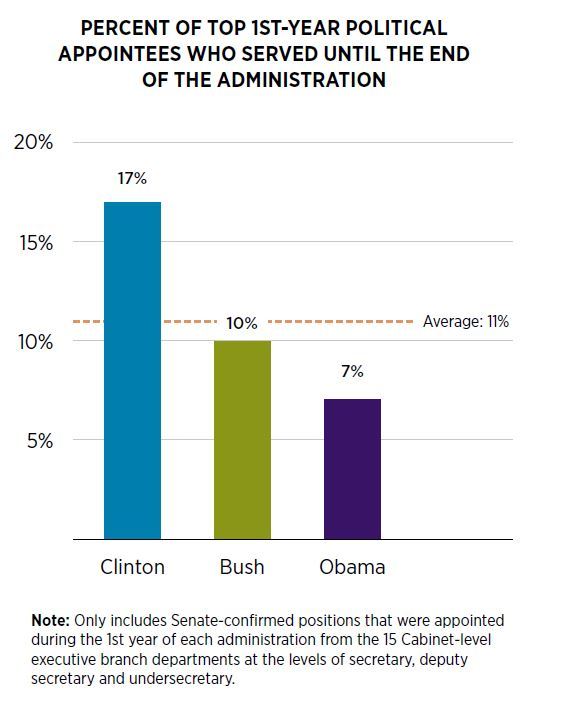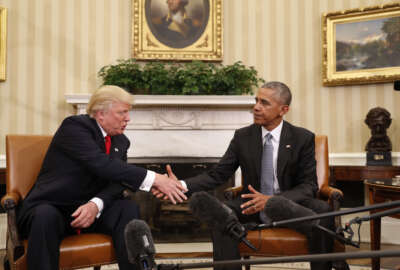
No matter the upcoming election outcome, time to start preparing for presidential transition
Transition planning is necessary, because 43% Cabinet secretaries, deputy secretaries and undersecretaries during the Clinton, George W. Bush and Obama administ...
Regardless of the outcome on Nov. 3, 2020, former White House staffers and good government experts have a single message for the current administration.
The time is now to start preparing for the next presidential transition — whether Donald Trump wins reelection or not.
“My instinct is that every two-term presidency has had the same problem, which is the president doesn’t think of it as a transition,” Josh Bolten, former chief of staff during the George W. Bush administration, said Thursday at the Partnership for Public Service’s official relaunch of the Center of Presidential Transition. “He has people around him that he likes. He has an agenda that he’s pursuing. There may be issues that come more to the forefront in the second term than the first time. It’s a huge lost opportunity for an administration to relaunch itself, to refresh its personnel and to attack its policy agenda with the same vigor that the administration did in year one of its presidency.”
Bolten helped lead what has since been regarded as perhaps the smoothest presidential transition in recent history. President George W. Bush had instructed Bolten to begin putting together a transition team in spring of 2008.
And though presidential transition preparations are, as Bolten said, a chance for the existing administrations to freshen things up, historical data shows this planning is necessary, given the turnover of political appointees between the first and second terms of an administration.
Even for two-term presidents, first-term political appointees tend to leave at some point during the latter four years, according to new data from the Partnership’s newly relaunched Center for Presidential Transition.
An average of 43% of Cabinet secretaries, deputy secretaries and undersecretaries during the Clinton, George W. Bush and Obama administrations left within the first six months of the second term, according to the Center for Presidential Transition.
A majority, or an average of 19%, leave between Inauguration Day and the the first three months of the second term, according to the center’s data.
And very few, an average of 11% of political appointees, end up serving for the entirety of the administration, the data shows.

New Partnership data tracked 463 appointments across the Clinton, Bush and Obama administrations. During the six months between Election Day and Inauguration Day, five cabinet secretaries left the Clinton administration, eight departed the Bush administration and seven left the Obama administration.
This kind of turnover shows planning for the next four years is more important than you might think,” said Denis McDonough, the former White House chief of staff during the second half of the Obama administration.
“You know how fast four years goes,” he said. “It’s trite, but the most valuable resource in a White House by several orders of magnitude is the president’s time. That goes to the 24 hours in any given day, but it also goes to the four years in any term. As a chief of staff, you have to treat that gingerly as the precious resource that it is.”
The more time a second-term president spends on filling appointee vacancies, the less time he has to work on other priorities, McDonough said.
“How you can build in time to make those kinds of decisions so they’re not coming at the expense of everything else you want to do in the second term is really important,” he added.

The Partnership’s presidential transition center relaunches nearly one year out from the next election. David Marchick, who held several political appointments during the Clinton administration, will lead the center this time.
The center will update its presidential transition guide, which will include a roadmap and advice from former transition teams on how to prepare. Several other Partnership initiatives will focus on getting incoming political appointees prepared for a rigorous background check process, Marchick said.
Copyright © 2024 Federal News Network. All rights reserved. This website is not intended for users located within the European Economic Area.
Nicole Ogrysko is a reporter for Federal News Network focusing on the federal workforce and federal pay and benefits.
Follow @nogryskoWFED





